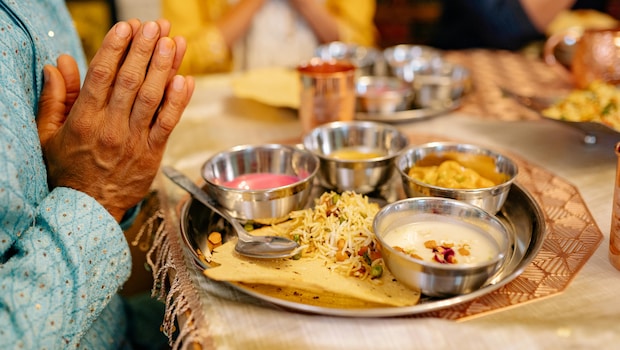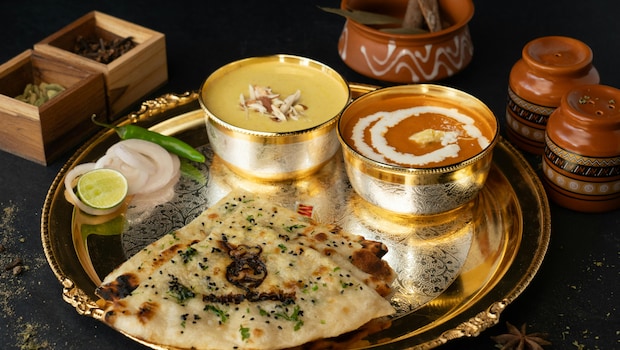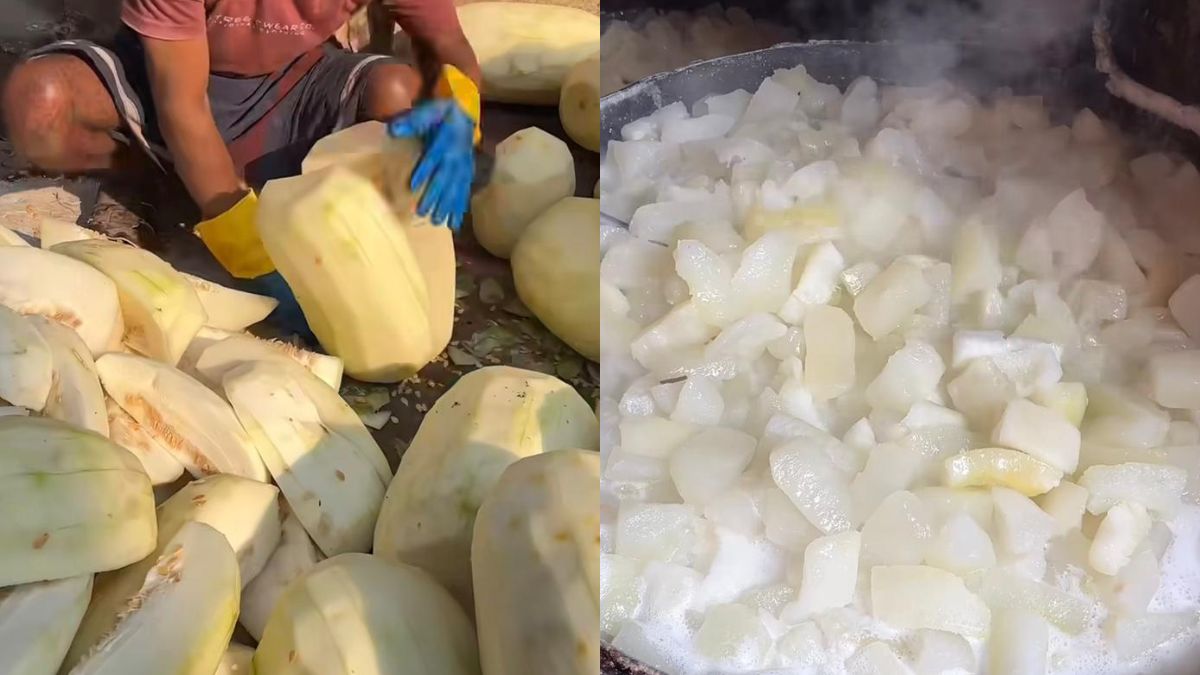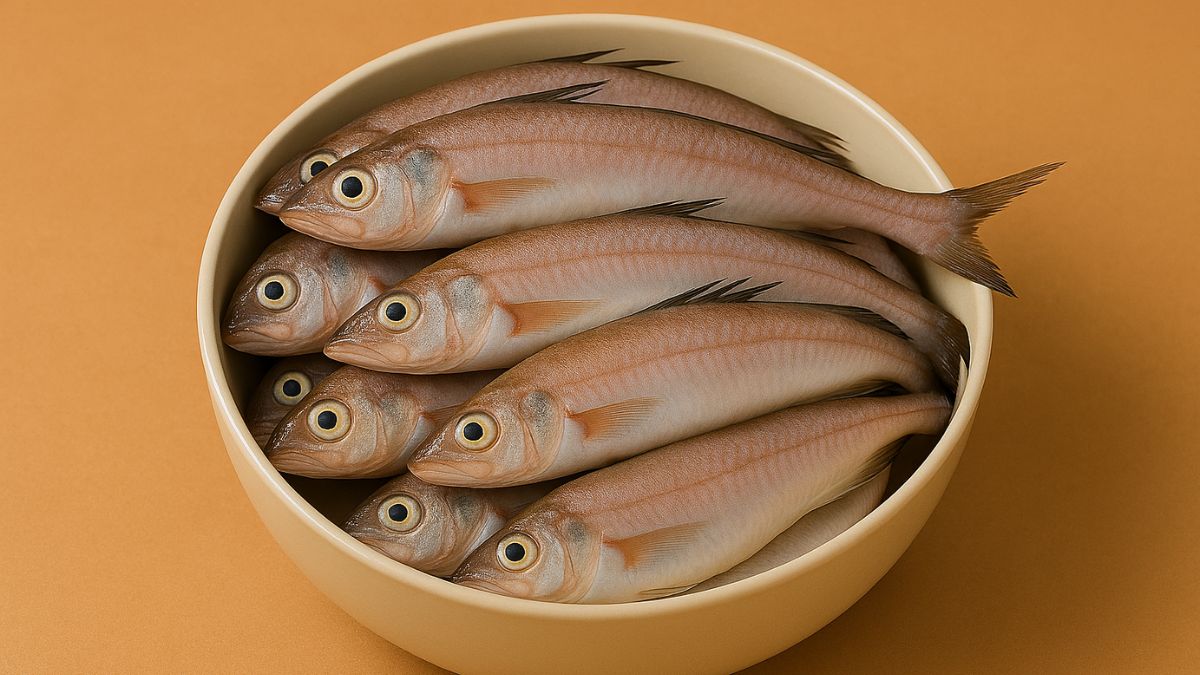As the Jain community prepares to observe Paryushan 2025 from August 21 to August 28, kitchens across India begin to reflect the spirit of simplicity, purity, and mindfulness. At its core, Paryushan is a deeply spiritual retreat marked by introspection, forgiveness, and non-violence. Food plays a quiet yet significant role in this period. From sattvic meals to vrat-friendly dishes, every bite is a reflection of compassion and restraint. Whether you are observing the rituals or simply curious about Jain cuisine, here is a guide that looks into the culinary customs of Paryushan. Expect wholesome recipes, gentle flavours, and meals that nourish both body and soul, prepared without onion, garlic, or root vegetables.
What Is Paryushan And Why Is It Celebrated?
Paryushan Parva, often called the "festival of forgiveness", is one of the most sacred observances in Jainism. Celebrated annually, it spans eight days for Shwetambar Jains and ten days for Digambar Jains. The word Paryushan comes from "pari" meaning "all sides" and "ushan" meaning "to stay close to the soul". This is a time to pause worldly activities and reflect within.
The festival encourages spiritual growth through fasting, meditation, prayer, and self-restraint. It culminates in the ritual of Samvatsari, where Jains say "Micchami Dukkadam" - a heartfelt request for pardon.
Significance Of Paryushan Parva:
At its heart, Paryushan is about liberation through forgiveness. The teachings of Lord Mahavir, the 24th Tirthankara, guide this period. His principles - Ahimsa (non-violence), Satya (truth), Aparigraha (non-possessiveness), and Anuvrat (small vows) - are not just philosophical ideals but practices followed closely during Paryushan.
Devotees engage in Pratikraman, a ritual of introspection and repentance. They read sacred Jain texts, chant mantras, and meditate to cleanse the mind and soul.
Mahavir Jayanti And Its Connection To Paryushan:
Though Mahavir Jayanti is celebrated in April, its essence is interwoven into Paryushan. On the fifth day, Jains observe Mahavir Janma Kalyanak Vanchan, a ceremonial reading of Lord Mahavir's birth story. During Paryushan, followers live by his teachings in every aspect, from food choices to daily conduct, reinforcing the idea that spiritual practice is not limited to rituals but reflected in everyday living.
Paryushan Rules Around Food: What To Avoid And Why?
One of the most striking aspects of Paryushan is the discipline around food. Jain dietary rules are rooted in Ahimsa, which means avoiding harm to any living being. This includes avoiding root vegetables such as onions, garlic, potatoes, and carrots, as uprooting them kills the plant and disturbs soil organisms.
Leafy greens are avoided on certain days as they may harbour small organisms. Fermented foods are skipped as they are considered to contain micro-organisms. Food is eaten before sunset so that no harm is caused to insects at night and digestion remains light. These rules ensure meals are sattvic, pure, and aligned with the spirit of compassion.
Health Benefits Of A Jain Diet During Paryushan:
Beyond its spiritual significance, the Jain diet during Paryushan has practical health benefits. Eating early in the evening improves digestion and supports circadian health. Avoiding heavy spices and fried foods reduces acidity and bloating. A sattvic diet, rich in fruits, whole grains, and light dals, promotes gut health and leaves the body energised rather than sluggish.
Many also observe fasting in different forms - some on fruit, some on one meal a day, and some even on boiled water only. Fasting gives the body a natural detox while also helping with mental clarity and discipline.

Photo Credit: Pexels
Modern Jain-Friendly Food Swaps For Paryushan:
While traditional rules are observed, modern kitchens have adapted with clever ingredient swaps that allow variety without breaking guidelines:
- Replace potatoes with pumpkin or raw bananas in sabzi.
- Use banana or peanut-based raita instead of curd.
- Add hing (asafoetida) for depth instead of garlic.
- Swap refined sugar with jaggery or dates in sweets.
These substitutions not only keep food sattvic but also make it easier for younger generations to balance tradition with taste.
Paryushan Fasting Vs. Non-Fasting: How People Adapt?
Not every Jain follows the same pattern of fasting. While some devotees go on a complete fast with only water, others observe ekasana (eating once a day) or upvas (fruit-based fasting). Many balance by having sattvic meals without onion, garlic, or root vegetables, ensuring they can sustain themselves through work and daily life. This flexibility shows how Paryushan can be adapted without losing its essence.
Paryushan 2025: A Simple Meal Plan To Follow
The meal plan during Paryushan reflects balance, restraint, and purity. Each meal is prepared with sattvic ingredients that support both fasting and mindfulness.
1. For Breakfast
During Paryushan, many devotees choose to fast or eat minimally. For those who do have breakfast, the focus is on light nourishment that supports gut health and detoxification:
- Warm water with soaked dry fruits
- Methi dana or jeera water
- Fresh fruits such as banana, apple, papaya
2. For Lunch
Lunch is the most substantial meal, consumed before sunset in line with Jain principles of minimal harm. These meals focus on simple cooking and nourishment to keep the body calm and steady.
- Plain khichdi with no tadka
- Sabzi without onion, garlic, or root vegetables such as potato
- Dal with minimal spices
- Atta roti without ghee
- Simple salad with cucumber, tomato, capsicum
3. For Evening
Dinner is kept light and simple, often resembling breakfast or lunch but in smaller portions. It is usually consumed before sunset.
- Simple khichdi or dal rice
- Sabudana khichdi with rock salt
- Fresh fruits (not pre-cut or stored)
Also Read: Watch: How To Make No-Onion, No-Garlic Gravy For All Indian Curries
Traditional Jain Recipes For Paryushan 2025:
These sattvic recipes reflect the essence of Paryushan while keeping meals nourishing and wholesome.
1. Sabudana Khichdi:
A classic during vrat, sabudana khichdi is light yet filling. Made with soaked sabudana, roasted peanuts, rock salt, and mild spices, it is easy to prepare and keeps you energised. You can also order it through online food delivery apps and savour on-the-go.
2. Kuttu Ka Cheela:
Buckwheat flour (kuttu ka atta) is gluten-free and easy to digest. You can make cheela using this flour instead of besan and pair it with fresh coriander chutney.
3. Lauki Soup:
Bottle gourd (lauki) is hydrating and cooling. Boiled and blended with a pinch of jeera and rock salt, this soup is ideal for breaking a fast.
4. Dal Dhokli:
A comforting Rajasthani dish made with dal and atta dumplings, it is wholesome and nutrient-rich. A Jain-style dal dhokli can also be ordered from delivery apps when pressed for time.
5. Bhaat Na Muthiya:
A steamed Gujarati delicacy made from leftover rice, atta, and mild spices, it is a perfect instance of zero-waste cooking. These dumplings are shaped by hand and gently steamed, making them light yet satisfying. They require no onion, garlic, or root vegetables and pair well with moong dal or lauki soup.
6. Kela Anar Raita Without Curd:
This refreshing side dish skips curd and uses mashed ripe banana and pomegranate seeds, lightly seasoned with rock salt and roasted jeera powder. It is naturally sweet, cooling, and sattvic, ideal for fasting days.

Photo Credit: Pexels
The Bottom Line:
Paryushan is observed through mindful eating, introspection, and forgiveness. The food served during this period is a reflection of compassion, simplicity, and spiritual discipline. Whether you are observing the festival or interested in Jain cuisine, these recipes, rules, and rituals offer a gentle reminder of inner peace and balance.
Disclosure: This article may contain links to third-party websites or resources. However, this does not affect the integrity of the content, and all recommendations and views are based on our independent research and judgment.
About Somdatta SahaExplorer- this is what Somdatta likes to call herself. Be it in terms of food, people or places, all she craves for is to know the unknown. A simple aglio olio pasta or daal-chawal and a good movie can make her day.









